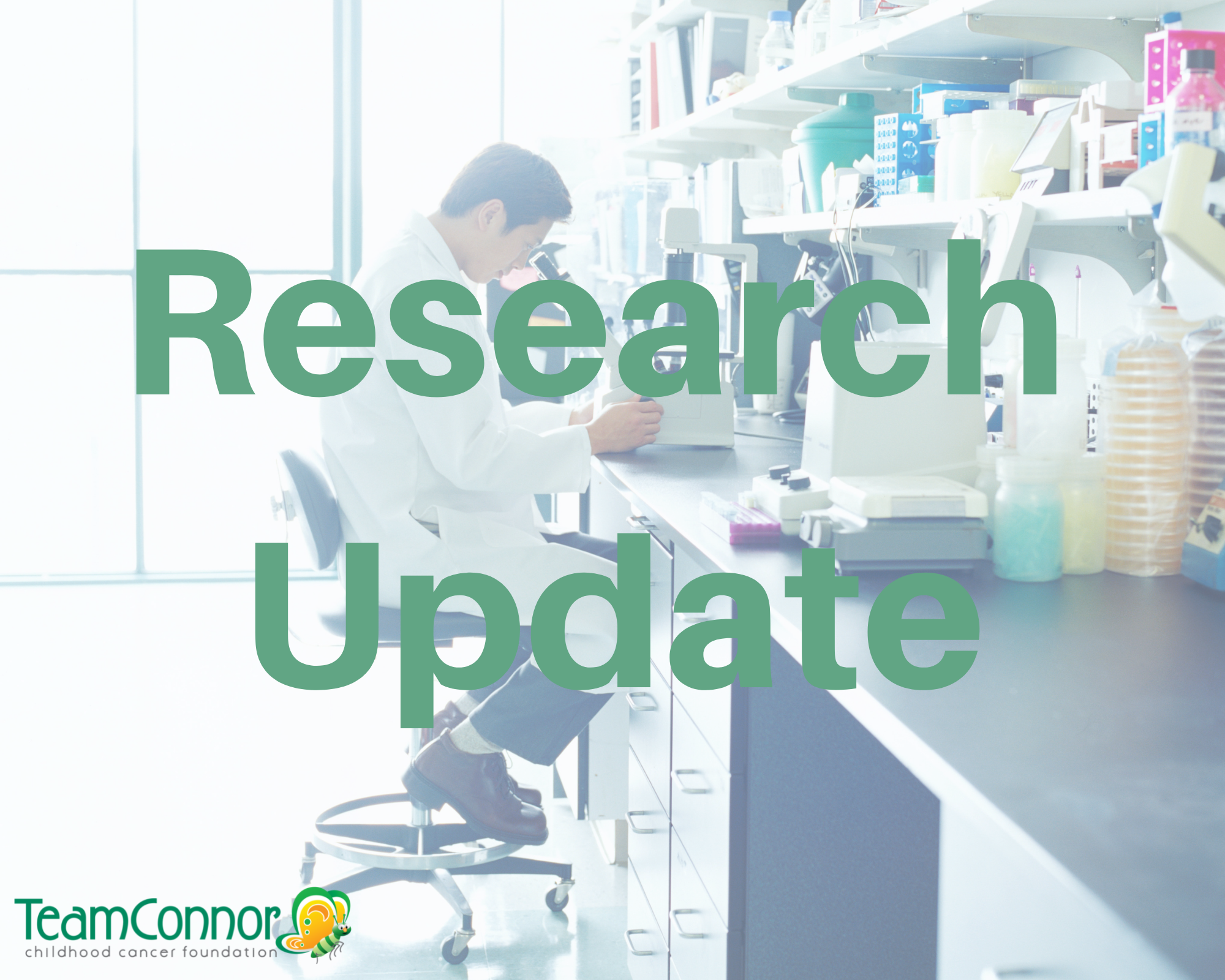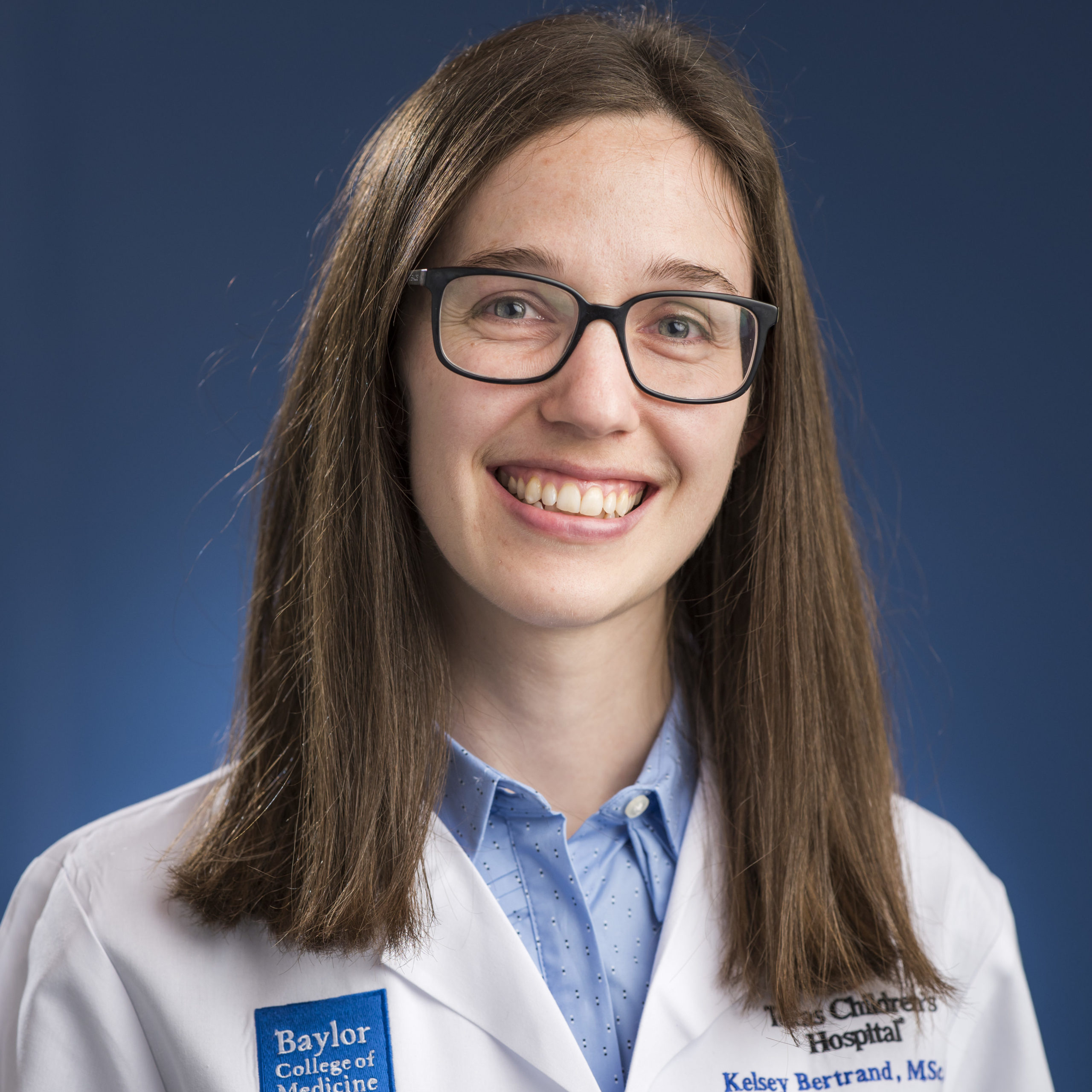Research Funded Grant Updates


TeamConnor was honored to be able to fund over $1.1M in research grants for childhood cancer this year because of generous donors to our organization. We recently received updates from several of our wonderful researchers and wanted to share with you all their latest research findings.


She shared with us the following updates:
- During the first year, we made significant progress on characterizing the improvements in T cell function with increased AMPK activity. We were excited to find that our modified T cells showed enhanced ability to expand and to make cytokines, which are both goals to make better CART cells.
- I was able to share our early findings at the American Society of Hematology (ASH) annual meeting in December of 2020, and we are weeks away from submitting a manuscript detailing this work.
- After recently returning from maternity leave, I am hoping to complete additional conference/manuscript submissions for our work with CART cell models. We are excited to next turn our attention to CART cells themselves! We will begin to utilize preclinical mouse models of leukemia to evaluate for improved CART cell function with increased AMPK activity.
- I also received the excellent news that I will be able to further my research in 2022, supported by a Young Investigator Grant Award from Hyundai Hope on Wheels.


Her update shared the following:
Ependymoma is an aggressive pediatric brain tumor that is treated with surgery and radiation, but historically has been resistant to chemotherapy. Patients often require multiple surgeries, relapse years after therapy, and survivors can have poor quality of life due to sequelae of treatment. There are currently no targeted therapies that have been successful in treating these tumors. Compared to other pediatric cancers, there are drastically fewer targeted agents under evaluation in ependymoma clinical trials. Therefore, new biological insights and therapeutic agents for ependymoma are desperately needed to improve survival, as well as to decrease the long-term adverse effects of treatment. Ependymoma can be divided into different groups by location and biology, but the majority of ependymomas are positive for a cell surface marker, HER2. PF-06084103 is a novel drug compound that targets the HER2 protein and has been shown to have efficacy in HER2+ breast and solid cancers. My research seeks to leverage this knowledge to test this compound in ependymoma models, both in cell culture and in ependymoma mouse models, and compare the efficacy of the drug to HER2+ CAR-T cells. The first aim of this project has been successfully completed, and the second aim has been partially completed.


Despite breakthroughs in cancer biology, patients with pediatric solid tumors have seen minimal improvement in outcomes. Solid tumors are heterogeneous tissues that harbor a paucity of mutations at diagnosis, and tissue biopsy at relapse is difficult in children, limiting application of targeted therapies. Liquid biopsy has the potential to overcome these limitations, and there is a critical need to harness minimally invasive circulating tumor (ctDNA)
assays to elucidate actionable targets in high risk neuroblastoma (NBL), a devastating pediatric malignancy with poor survival rates. The objective of this study is to develop novel assays of circulating nucleic acid to detect sub-clonal variants and genomic fusions with deep sequencing, validating their utility as a diagnostic and serial biomarker of tumor response. To accomplish this, we proposed establishing deep sequencing of circulating nucleic acid as a comprehensive, feasible and prospectively accurate test, leveraging these data to create a clinically validated pan-pediatric solid tumor liquid biopsy assay.
When we applied for the grant, we had already completed an extensive design of a next generation sequencing based assay for NBL. After comprehensive review of genomic datasets, we designed this panel to coding regions of 22 recurrently mutated genes in NBL with strict internal controls. We had optimized high throughput automated molecular and computational pipelines to detect mutations with <1% variant allele frequency (VAF) and copy number aberrations in. tumor tissue. We applied these data to begin work on the liquid biopsy aims as follows:
Specific Aim 1: Identify targetable sub-clonal mutations in ctDNA at diagnosis and their evolution during therapy.
We have worked with ArcherDX to adapt our 22 gene NBL specific deep sequence panel to a ctDNA LiquidPlex assay. Since we are probing very low VAFs outside the range of standard practice using a novel methodology that will have clinical implications, we have worked extensively to validate and optimize this assay. We completed two rounds of optimization sequencing runs utilizing cell free reference standards and controls, using varying amounts of input DNA to mimic the variation we will see from patients. We have established our limit of detection at 0.1% VAF with 50 ng of cell free DNA input and at 0.5% VAF with 20 ng of DNA input.
We have further optimized detection of MYCN amplification; since high level amplification skews sequencing results we optimized MYCN primer spike-in as a 1:4 dilution of other probes, and confirmed this on a number of MYCN amplified cell lines (Figure 1 and 2).
Figure 1: MYCN Primer Dilutions: MYCN amplification (red bar) is readily visible in the 1/4 dilution, but not in the other dilution samples.
Figure 2: MYCN Dilution. Validation: Accurate analysis of MYCN amplification using 1:4 dilution series in 4 validation samples with known MYCN. amplification.
We also validated the assay’s ability to accurately detect ALK amplification (Figure 3), as well as large in-frame N-terminal ATRX deletions.
Figure 3: ALK amplification
We are further probing our detection of small ATRX deletions with additional sequencing of patient tumor tissues with validated ATRX deletions published by our colleagues in the Diskin lab. In parallel, we have introduced the major amendment to the Children’s Oncology Group ANBL 1531 phase III study to replace the first generation ALK inhibitor crizotinib with lorlatinib, a potent third-generation ALK inhibitor. This amendment is expected to take effect this summer. As part of this amendment, we have partnered with Dr. Elaine Mardis at the Institute for Genomic Medicine to design a custom ArcherDX panel which will replace current Sanger sequencing and become the NGS diagnostic assay for all ANBL1531 tumors. This diagnostic tissue panel will interrogate the ALK tyrosine kinase domain, MYCN, and a number of potentially targetable genes, NRAS, KRAS, HRAS, PTPN11, BRAF, and TP53. We have collaborated with Dr. Mardis and Archer to optimize assay parameters, confirm limit of detection, and analyze data from 60 cell lines and tumor tissues to achieve CLIA certification for this test as a clinical assay. Having completed successful optimization, in the next 6 months we will profile blood samples from patients enrolled on COG ANBL1531, which includes a treatment arm to evaluate the efficacy of adding ALK inhibition to standard chemotherapy in patients with ALK-driven disease. We will directly compare the presence of key mutations at diagnosis in the sampled biopsy tissue with those in the ctDNA. Serial sampling will yield key insights into patient response to chemotherapy, correlating VAF trajectory with tumor burden. We will also characterize the catalogue of potential resistance mutations that arise during chemotherapy and lorlatinib treatment.
Specific Aim 2: Develop an RNA based liquid biopsy panel for detection of oncogenic fusions. Many pediatric solid tumors, notably sarcomas and rhabdomyosarcomas, are driven by oncogenic genomic fusions rather than the point mutations present in NBL. To overcome the technical challenges in detecting unique intronic breakpoints in liquid biopsy, we proposed developing a novel circulating RNA based assay in collaboration with Dr. Marilyn Li and the Division of Genomic Diagnostics (DGD), who have previously designed a custom pediatric solid tumor fusion panel now used for clinical sequencing on diagnostic tumor tissue. To achieve this, we first worked to optimize cell free nucleic acid collection from fresh patient blood samples. We utilized Streck tubes to collect blood from patients with NBL, and optimized methods for plasma storage to avoid RNA degradation. We are currently optimizing protocols for cell free RNA extraction. In parallel, we have worked with the DGD to perform a meta-review of their patient sequencing data and identify recurrent mutations and fusions across all solid tumor patients sequenced at CHOP. Using these data, as well as our validation of the liquid biopsy panel above, we are designing the pan-pediatric solid tumor assay. We have collaborated with the CHOP biorepository to then validate this panel on patient samples. This work will prospectively determine the potential of sub-clonal peripheral blood mutation tracking as a prognostic biomarker of NBL, as a model for other aggressive childhood solid tumors, and enable a pan pediatric solid tumor blood assay that will rapidly advance pediatric cancer diagnostics and therapeutics.
